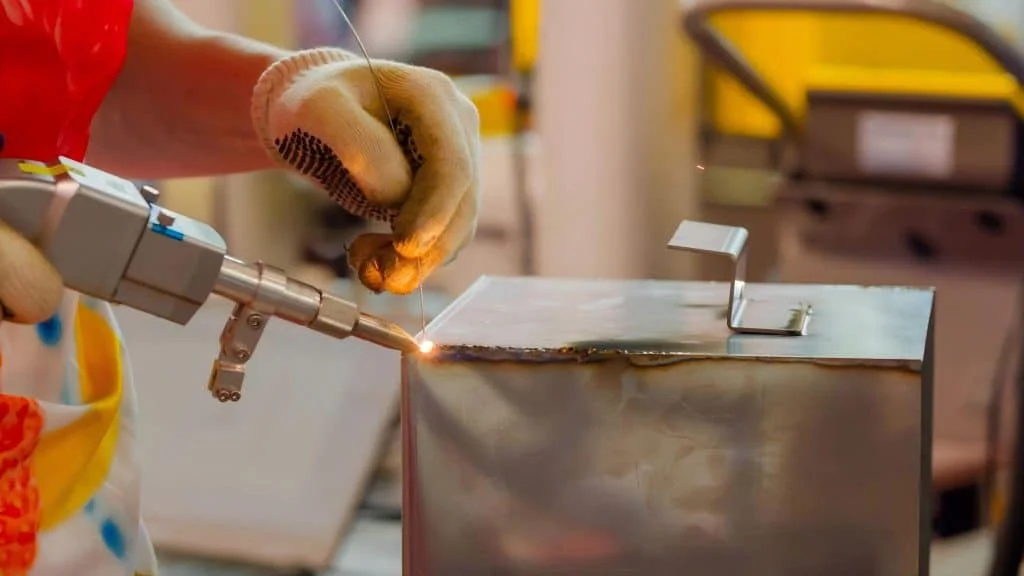In precision manufacturing, it’s often the little things that carry the most weight. Welding fixtures—those steady hands that keep parts in place during the weld—are a good example. A well-built fixture makes sure parts line up just right, minimizes distortion, and keeps finished pieces within tight tolerances. Yet one key aspect doesn’t always get the attention it deserves: the welding fixture material itself.
The choice of material has a ripple effect. It impacts durability, yes, but also heat resistance, cost, and even day-to-day efficiency on the shop floor. Pick the wrong one and you might be dealing with warped components, uneven welds, or fixtures that give out long before their time. Choose wisely, and you’ll see fewer hiccups, stronger welds, and smoother production runs.
What follows is a closer look at the most common fixture materials, the strengths and drawbacks of each, and some practical guidance for matching the right material to your operation.
A trending highlight tailored to spark your next thought.
The Role of Welding Fixtures in Precision Manufacturing
Fixtures really are the backbone of quality welding. They:
- Hold parts firmly in place, ensuring consistency from one weld to the next.
- Keep distortion under control so tolerances stay tight.
- Work hand-in-hand with automation and robotic welding systems.
- Cut down on rework and scrap, improving overall efficiency.
But here’s the catch: a fixture can only perform as well as the material it’s made from. Imagine one that swells too much under heat or wears out after a handful of cycles—you’d lose time, money, and trust in the process. That’s why choosing the right welding fixture material isn’t just a technical call; it’s a strategic one.
Common Welding Fixture Materials
Here are the go-to choices you’ll see in most shops.
1. Steel: The Industry Standard
Steel is, by a long shot, the most common welding fixture material for heavy-duty use.
Pros:
- High strength and load capacity
- Solid wear resistance
- Long service life under repeated use
- Readily available and generally affordable
Cons:
- Weight makes handling and transport tougher
- Can rust unless treated or coated
- Expands under heat, which may throw off precision
Best for: Automotive, shipbuilding, and other large-scale structural jobs.
2. Aluminum: Lightweight and Adaptable
Aluminum fixtures are making big strides, especially in industries that prize speed and flexibility.
Pros:
- Much lighter and easier to move
- Excellent thermal conductivity
- Naturally resistant to corrosion
- Easy to machine and customize quickly
Cons:
- Doesn’t match steel’s raw strength
- Can deform if put under heavy stress
- More expensive than basic steels
Best for: Aerospace, electronics, and smaller to mid-sized components.
3. Cast Iron: Traditional but Reliable
Cast iron has been around forever in tooling and fixture design, and for good reason.
Pros:
- Strong and rigid under pressure
- Naturally absorbs vibration
- Resists wear over time
Cons:
- Heavy and brittle—drop it and it might crack
- Hard to modify once it’s made
- Doesn’t stand up well to corrosion
Best for: Rugged, vibration-heavy environments and heavy-duty welding.
4. Composites and Advanced Materials
Modern shops are beginning to lean on composites, ceramics, and other hybrid materials when they need cutting-edge performance.
Pros:
- Strong but lightweight
- Outstanding resistance to corrosion and chemicals
- Very little expansion when heated
Cons:
- High initial cost
- Requires specialized machining and handling
- Not as widely available as metals
Best for: High-precision sectors such as medical devices and advanced robotics.
Quick Comparison Table: Fixture Material Properties
| Material | Strength | Heat Resistance | Weight | Corrosion Resistance | Best For |
| Steel | High | Medium | Heavy | Medium (treated) | Automotive, structural |
| Aluminum | Medium | Medium | Light | High | Aerospace, electronics |
| Cast Iron | High | High | Heavy | Low | Heavy-duty welding |
| Composites | Medium | High | Light | Very High | Medical, robotics |
Factors to Consider When Choosing Fixture Material
When weighing your options, keep these points in mind:
- Heat Resistance: Will the fixture be exposed to long cycles of high heat?
- Strength-to-Weight Ratio: Is portability important, or do you just need brute rigidity?
- Corrosion Resistance: Will moisture, chemicals, or other harsh conditions be a concern?
- Cost vs. Lifecycle Value: Is a lower upfront price worth it if the fixture wears out sooner?
- Ease of Customization: How easily can you machine or adapt the fixture for new projects?
The Future of Welding Fixture Materials
As the industry shifts toward smarter, more automated production, fixture materials are evolving too. Some manufacturers are experimenting with hybrid designs—steel bases topped with composite surfaces, or modular aluminum systems where worn parts can be swapped out. Robotics in particular is pushing demand for lighter, yet stable, fixtures that won’t slow down automation.
Forward-looking suppliers such as Denaliweld are stepping up with solutions that blend durability, adaptability, and ergonomic design. Fixtures that once had to choose between strength and flexibility are now starting to deliver both, ensuring they keep pace with modern manufacturing needs.
Practical Tips for Manufacturers
- Match material to the job: A shop making small electronic parts has different needs than a plant welding truck frames.
- Think ahead: Cheaper isn’t always better—calculate total lifecycle costs.
- Stay flexible: Modular setups in aluminum or composite can stretch your investment across more projects.
- Seek advice: Experienced welding fixture material suppliers can help tailor recommendations to your workflow.
Conclusion
Picking the right welding fixture material isn’t just about the technical specs—it’s about strategy. Steel will always have its place in heavy industry, aluminum offers unmatched agility, cast iron brings rock-solid stability, and composites are pointing the way forward. The key lies in balancing strength, weight, cost, and adaptability for your specific operation.
In a competitive market, there’s little room for trial and error. Working with experienced partners who understand both the science and the shop-floor realities of fixture materials helps ensure your welding stays consistent, efficient, and built to last.
Curious hearts and bright minds—follow the path to more wisdom on Management Works Media.






